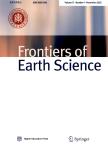A new three-dimensional terrain-following tidal model of free-surface flows
A new three-dimensional terrain-following tidal model of free-surface flows作者机构:Key Laboratory of Virtual Geographic Environment (Nanjing Normal University) Ministry of Education Nanjing 210023 China State Key Laboratory Cultivation Base of Geographical Environment Evolution (Jiangsu Province) Nanjing 210023 China Jiangsu Center for Collaborative Innovation in Geographical Information Resource Development and Application Nanjing 210023 China
出 版 物:《Frontiers of Earth Science》 (地球科学前沿(英文版))
年 卷 期:2015年第9卷第4期
页 面:642-658页
核心收录:
学科分类:07[理学] 0707[理学-海洋科学] 08[工学] 081105[工学-导航、制导与控制] 0811[工学-控制科学与工程]
基 金:We appreciate the detailed suggestions and comments provided by the editor and the anonymous reviewers. Several research programs supported the work presented in this article: the National Basic Research Program of China (No. 2015CB954100) the National Natural Science Foundation of China (Grant No. 41306078) and the Priority Academic Program Development of Jiangsu Higher Education Institutions (Grant No. 1411109012)
主 题:three-dimensional numerical model alternating direction implicit method tidal flow orthogonal curvilinear coordinates terrain-following
摘 要:A three-dimensional hydrodynamic model is presented which combines a terrain-following vertical coordinate with a horizontally orthogonal curvilinear coordinate system to fit the complex bottom topography and coastlines near estuaries, continental shelves, and harbors. To solve the governing equations more efficiently, we improve the alternating direction implicit method, which is extensively used in the numerical modeling of horizontal two-dimensional shallow water equations, and extend it to a three-dimensional tidal model with relatively little computational effort. Through several test cases and realistic applications, as presented in the paper, it can be demonstrated that the model is capable of simulating the periodic to-and-fro currents, wind-driven flow, Ekman spirals, and tidal currents in the near-shore region.



